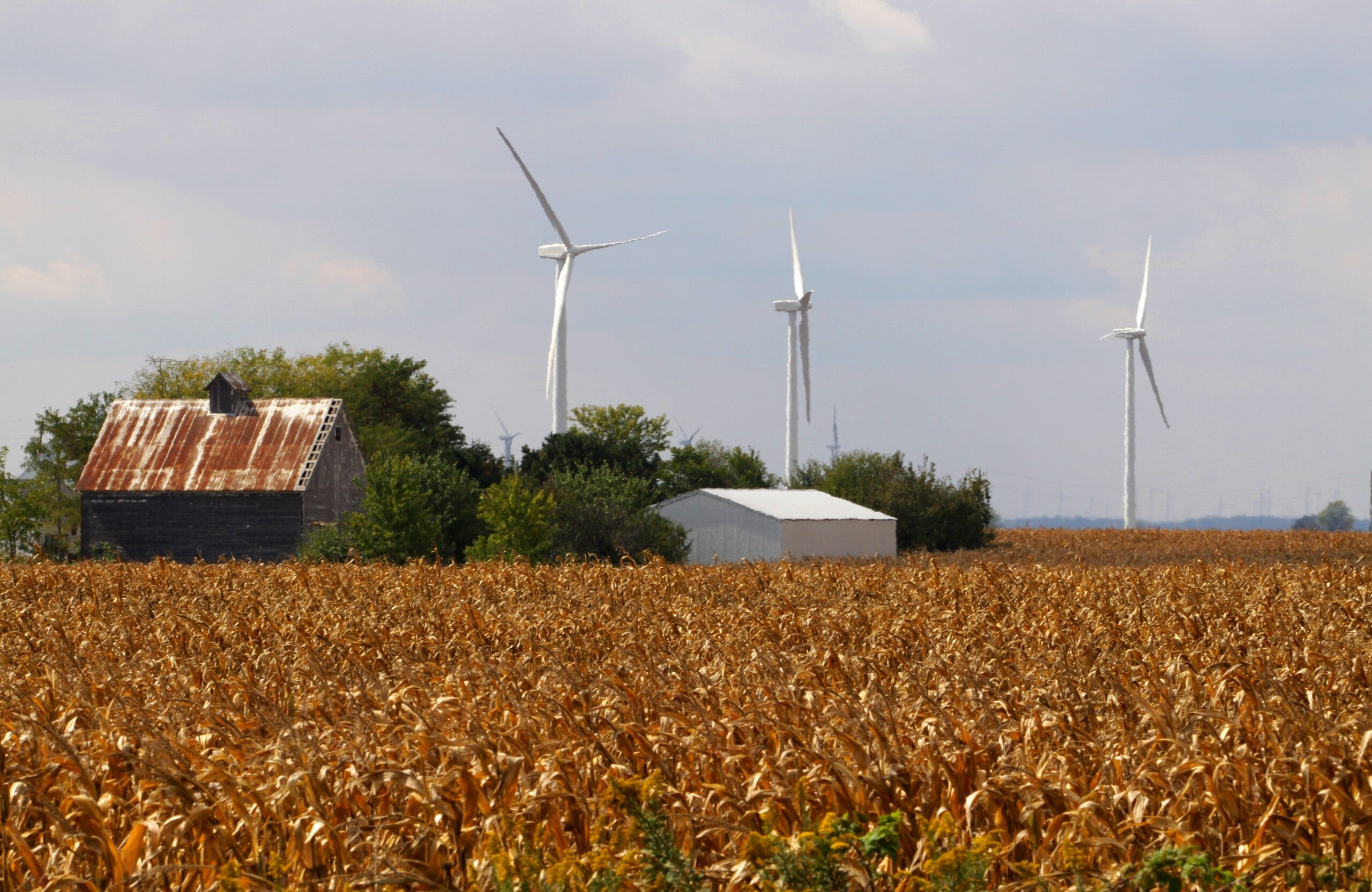A grid for a greater Indiana
(INDIANA CAPITAL CHRONICLE) — As any farmer knows, commodity prices are rarely stable. And when prices experience volatility, any additional revenue certainty can help farmers make the investments they need to stay competitive. Wind power development is increasingly offering that certainty for many in our state.
For example, after leasing land on his Elwood property for a wind project, third-generation farmer Rick Jarrett noted “as a family farm, the revenue was good, and the payments are always good.” Jarrett is just one of dozens of Indiana landowners now making an extra stream of income off the wind blowing across Central Indiana. In fact, a report from Purdue University estimated that Indiana landowners are paid roughly $7.5-$15 million per year for hosting wind turbines.
While many Indiana farmers directly reap benefits, the surrounding communities profit as well. Clean energy has driven considerable economic benefits in the state, with nearly 10,000 Hoosiers working in clean power jobs. The industry has spurred $8.1 billion in capital investments and provides $26 million in community tax benefits across the state, benefiting schools, fire departments, and other local government services. In 2019, the wind sector paid $4.3 million in property tax revenues to Benton County, equating to about $492 per resident.
All told, the American wind industry has invested more than $6.8 billion in the state. In White County alone, property taxes from clean energy provided 11% of the county’s 2021 revenues. Much of this revenue from wind generation is used to reduce the property tax burden on land in the surrounding area.
Additionally, Indiana farmers could soon have new opportunities to host projects if state regulators approve proposed long-distance transmission lines that will more efficiently transfer power across the upper Midwest, helping ensure reliable electricity, reduce utility costs for ratepayers, and connect more clean energy projects to the regional power grid.
Grid upgrade
In 2022, the Midwestern grid operator approved 18 transmission projects poised to deliver $37 billion in financial benefits over 20 years, 2.6 times more benefits than costs. In Indiana, project benefits are expected to total $7 billion over two decades, nearly three times the investment. The portfolio aims to bring new power generation sources online and strengthen the system against increasingly frequent and severe weather events. These lines will help ensure reliable, affordable power across the region for the next 20 years.
To reduce local disruption and maximize economic benefits, the lines will make use of existing routes and seek to co-locate new wind projects with existing transmission assets. The lines will also help keep power prices down for homeowners and businesses, as well as create an additional tax base to support new roads, emergency services, and other community benefits.
There are nearly 31 gigawatts (GW) of Indiana projects, predominantly clean energy facilities, waiting to connect to the Midwestern grid and begin delivering benefits to our local communities. But limited transmission capacity is preventing these critical projects – enough to power more than 23 million homes – from coming online, causing uncertainty for developers seeking to invest in the state and delaying the local revenue streams these affordable power sources provide.
Beyond the Midwest, Indiana wind power can provide potentially life-saving electricity when extreme weather strikes. During Winter Storm Elliott in December 2022, several Southeastern utilities were forced to conduct rolling outages as electricity demand increased and the cold snap forced power plants offline. Additional transmission capacity between the Midwestern grid and the Tennessee Valley Authority could have yielded nearly $80 million in benefits and helped keep the lights on.
Hoosier farmers across the state are already seeing the economic benefits of leasing their land for renewable energy development, but additional transmission lines are needed for further growth. New lines will give new farmers the opportunity to deliver their wind and solar “crop” to market, while also spurring a host of economic benefits for their neighbors.
It’s time to develop the next generation of grid infrastructure needed to unleash the tremendous potential of our available resources to support Indiana families.



